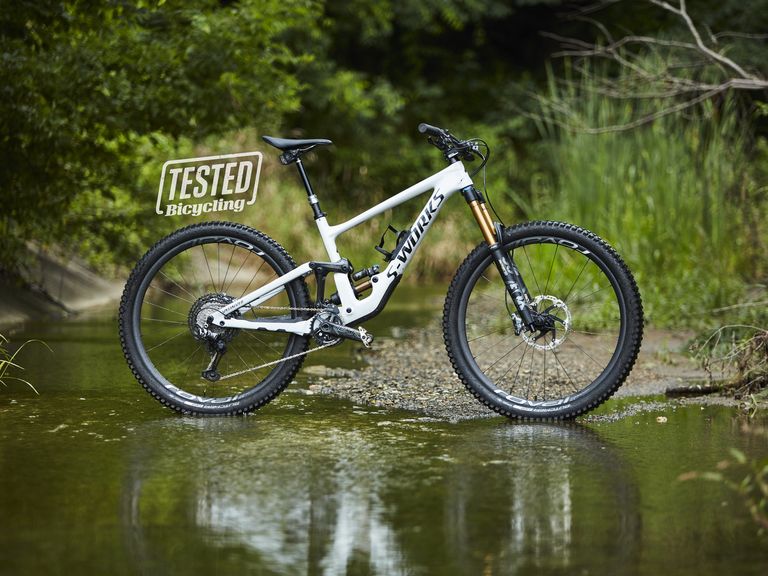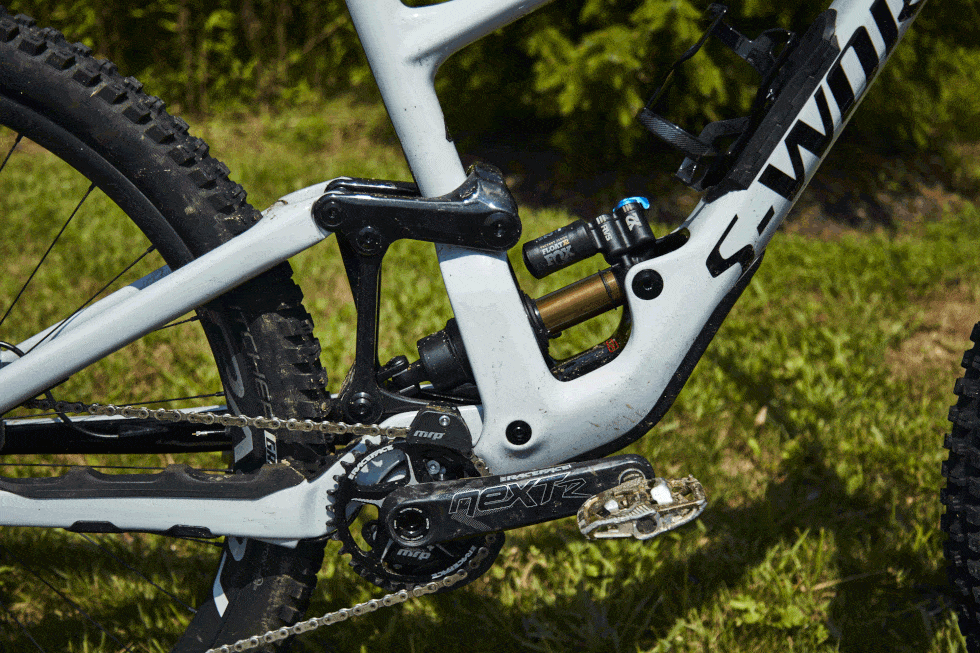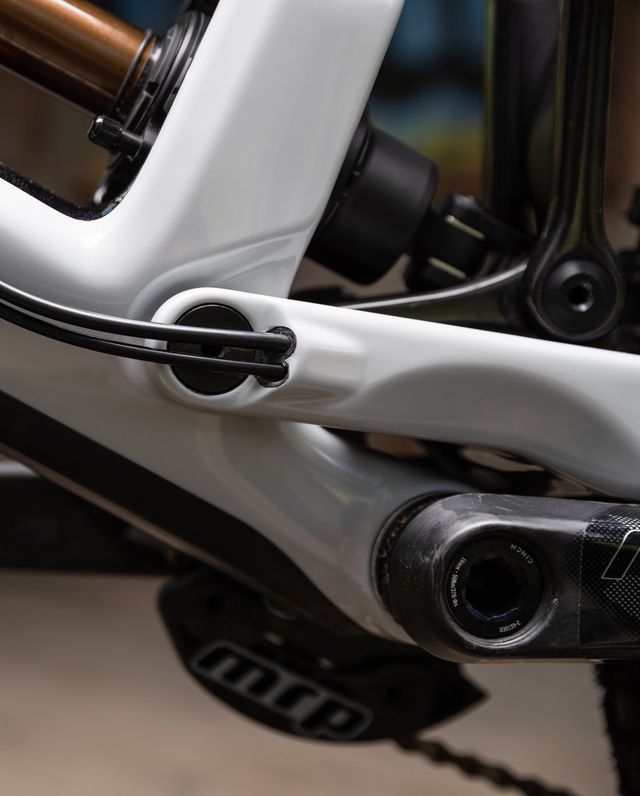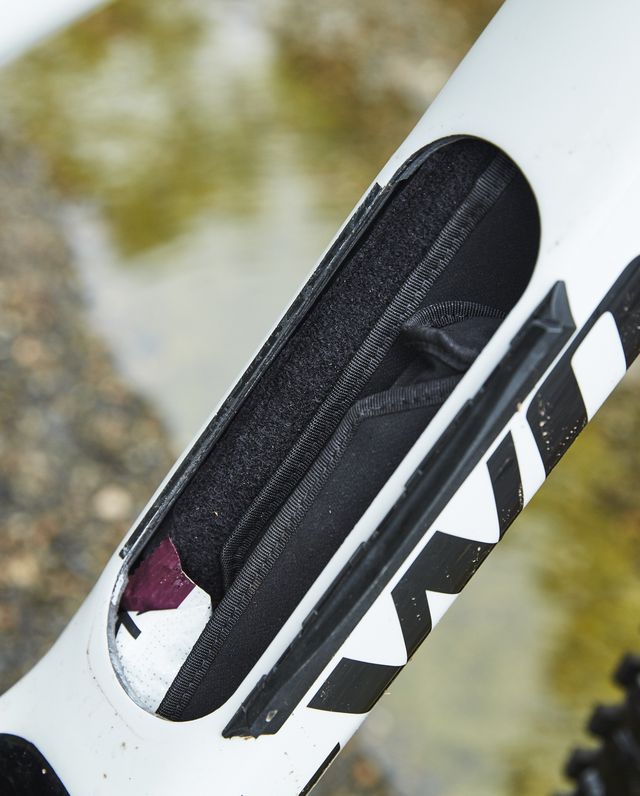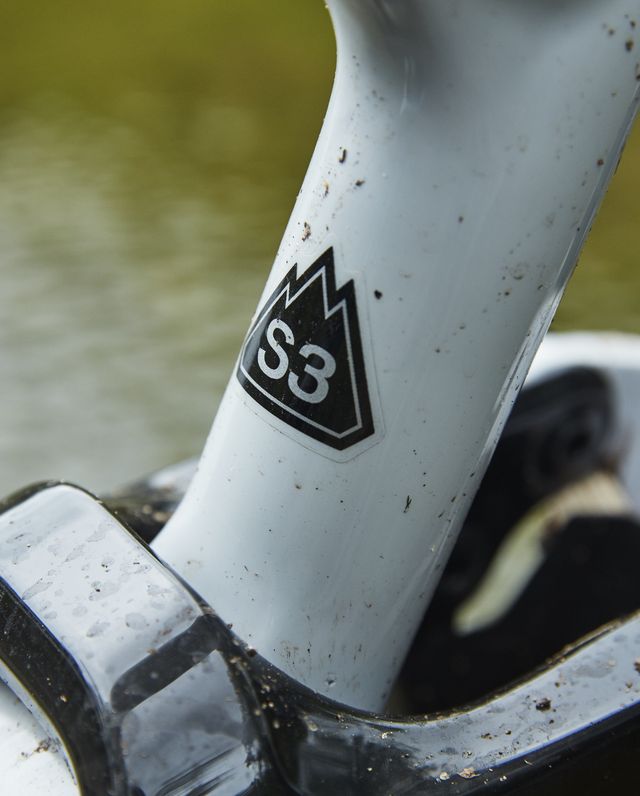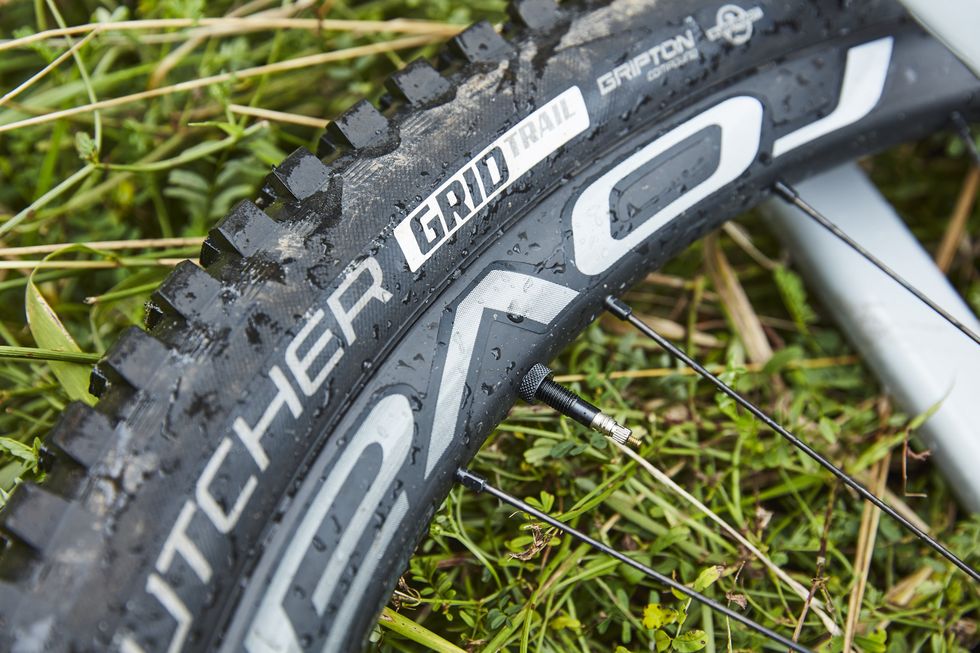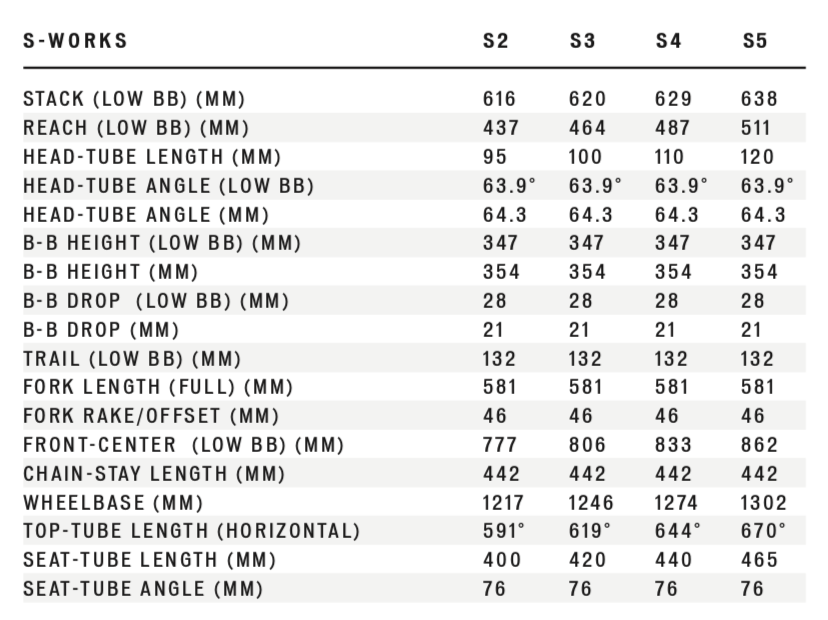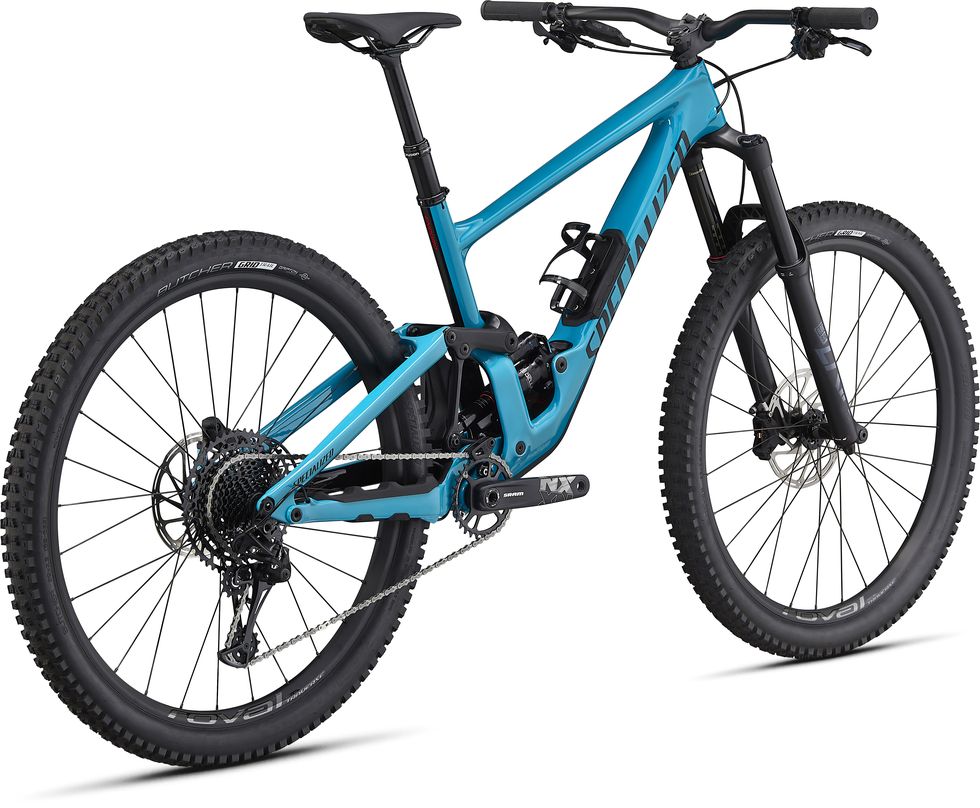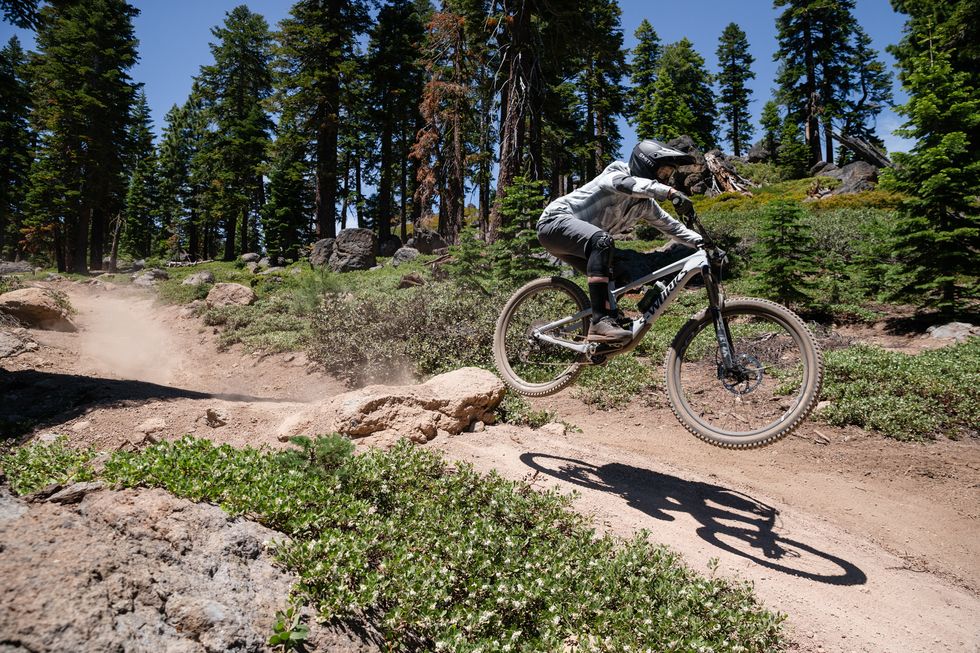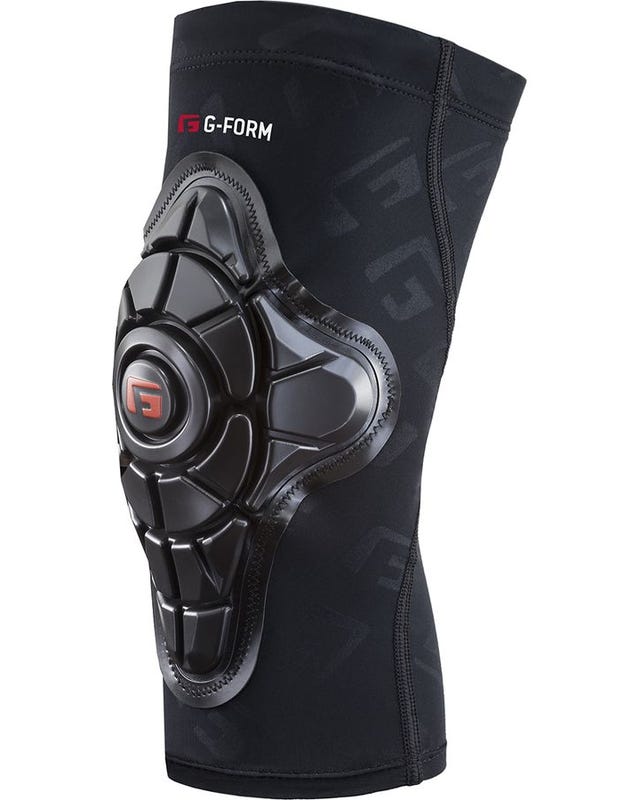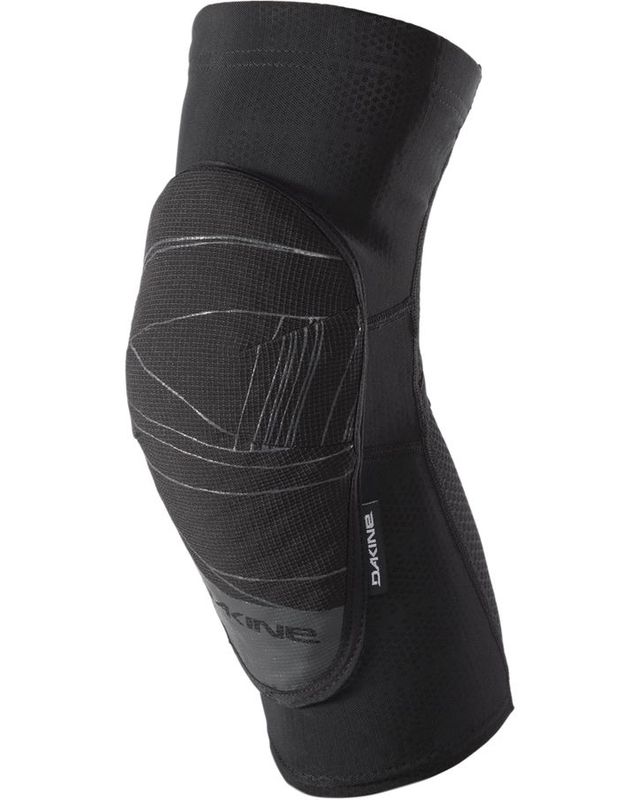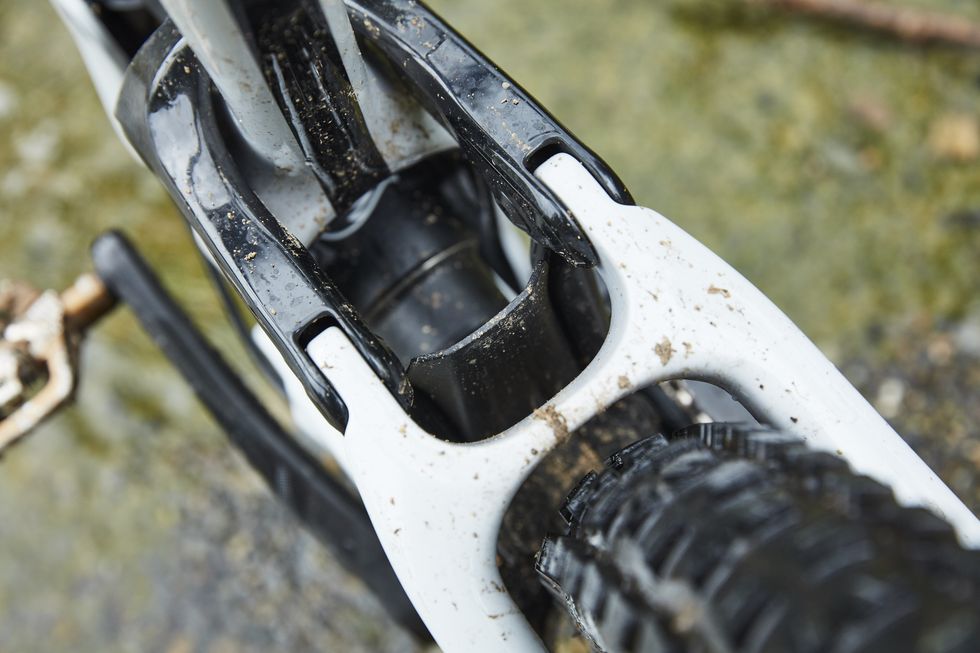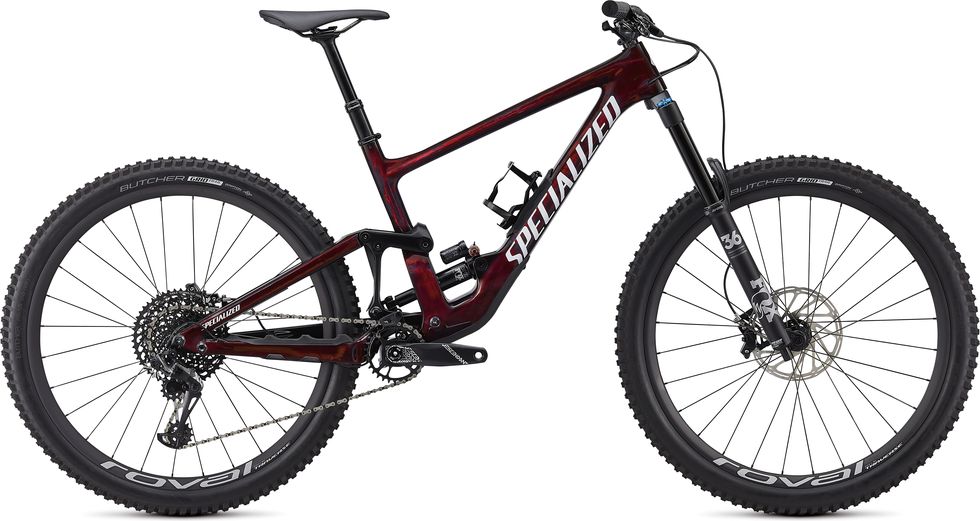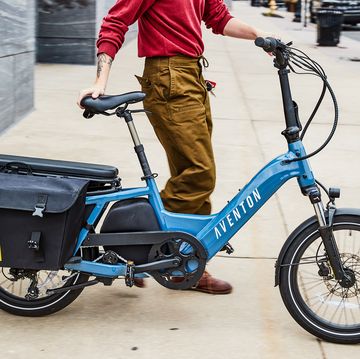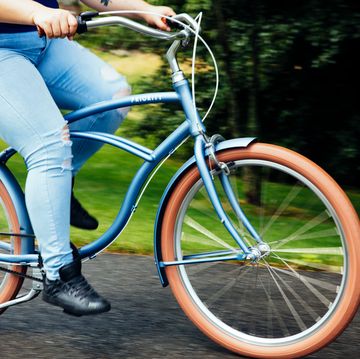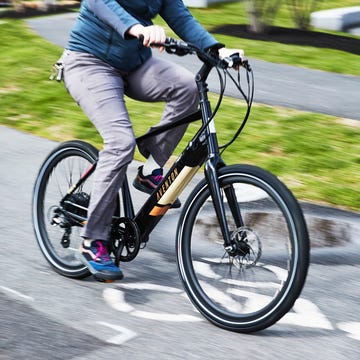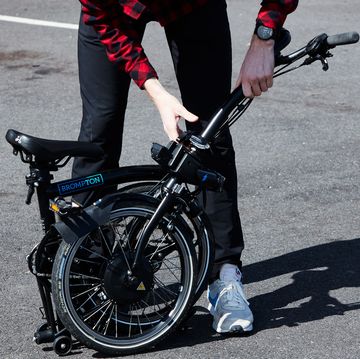The Takeaway: The new Enduro is a essentially a lightweight downhill race bike. It climbs okay, but it’s built to help riders find time on downhills and stand on podiums.
- 170mm of travel and 29 inch wheels.
- Suspension design lifted from Demo downhill race bike.
- New geometry and sizing based around reach and feel.
Price: $4,510 to $9,750
Weight: 30.1 lb. (S-Works, S3)
View Gallery
Specialized’s new Enduro is bigger—way bigger. Offered only in 29-inch wheels with 170mm of travel at both ends, and a massive wheelbase—it barely fit in my hitch rack—the new Enduro’s dimension aren’t far off from the company’s downhill race bike.
Which is fitting because the 2020 Enduro borrows its rear suspension design from the recently introduced Demo Race 29 downhill bike. It features a more rearward axle path to allow it to flow through successive square-edge impacts without “hanging,” allowing the rider to carry more speed.
More anti-squat should make it pedal more crisply, and a new shock rate is claimed to make the suspension more sensitive initially, with a more prominent ramp at the end of the travel. The packaging of the shock low in the frame lowers the bike’s center of gravity and allows lower top tubes. This last feature is key to the Enduro’s new reach-based sizing system: go longer for stability, go shorter for playful.
A bike this big is designed to do one thing: go downhill fast. And the new Enduro does: it’s brilliant at going fast. This bike is in complete sync with its purpose, which is why it’s not a playful bike, and, though it pedals crisply, its uphill skills are pretty much limited to wide and straight climbs.
But when it comes to traction and bump performance—the ingredients of speed—the 2020 Enduro is a benchmark, er, enduro bike. In shrinks bumps and shortens gaps, it makes big and scary shit less so. You can carry ridiculous speed on this bike into a frighteningly jagged rock garden and come out the other side going even faster. You’ll need to reset your braking points on familiar trails.
It’s a tool to let you ride faster than ever down hills. And for that, it’s hard to top.
What’s New
The 2020 Enduro is an all-new bike. It gets more travel, new suspension, new geometry, and it’s only available with 29-inch wheels.
Travel is up to 170mm at both ends, with the rear end employing the same link system that debuted in the new Demo Race 29 downhill bike.
While the links catch your eye, there’s another major update that’s harder to see: Specialized engineers pushed the main pivot forward and increased the length of Enduro’s chainstays (from 433 to 442mm). This helps generate a more rearward axle path in the first part of the travel, which, Specialized claims, lets the rear wheel move up and over bumps more easily than an axle path that doesn’t move rearward as much.
On the trail, this is supposed to result in something they’re calling “momentum carry,” or the feeling that the bike can pick up speed through bumpy sections instead of the sensation that it’s getting dragged backward with every impact.
This concept came from a request by Specialized-sponsored athletes like Loic Bruni at the beginning of the new Demo Race 29 downhill bike’s development. “We had a lot of feedback from the athletes that there was a poor feeling in their feet and they would have a lack of control at speed when hitting rocks—on the brakes, off the brakes—so we’re trying to get the rear wheel out of the way as fast as it can so they can go forward as fast as they can,” said Brad Benedict, Specialized’s mountain bike product manager.
Specialized’s engineers built test mules with an adjustable axle path and sensors—including accelerometers to measure bump inputs at the pedals—to find out what was fastest and felt best. Sponsored athletes and Specialized employees performed testing on trails, and at Specialized’s headquarters. There the team built a ramp off a shipping container that fed into a section of four by four beams. This allowed the team to make repeated runs easily and rapidly test different concepts.
Eventually they settled on an axle path that was more initially rearward than before and achieved the momentum carry goal but wasn’t so rearward that it had unwanted impacts on other areas of the suspension’s performance—suspension design is always an exercise in balancing compromises.
And since enduro racing today is essentially downhill racing with one less fork crown, the Enduro’s development team decided that if it works for the Demo, it can work for the Enduro too. So that’s why the new Enduro looks like a slightly downsized Demo Race 29.
Partially as a result of that more-rearward axle path, the new Enduro also gets a 40-percent bump in its anti-squat for crisper pedaling performance. More anti-squat can mean more pedal feedback, but a Specialized representative told me that it’s rapid changes in anti-squat value as rear suspension moves creates perceptible feedback. Though the new Enduro has more anti-squat, he said, the value is consistent throughout the new Enduro’s travel, and the rider doesn’t feel kickback.
The new Enduro’s shock rate was tuned to have more initial sensitivity and more end-of-travel ramp. It also plays nicely with coil-over shocks.
The linkage and shock placement also helped frame engineers lower the bike’s center of gravity and lower the top tube for more standover height and sizing flexibility.
Other details: the new Enduro has SWAT storage in the downtube, ISCG’05 tabs, and internal routing of hoses and housing. Compared to the previous Enduro 29, rear triangle stiffness is up about 12 percent, while front triangle stiffness remains equal.
Frame: Carbon
Wheel Size: 29 inch
Travel: 170mm
Shock: Fox Factory Float X2
Fork: Fox Factory Float 36 Grip 2, 170mm
Drivetrain: 1x12
Crankset: Shimano XTR, 32t
Rear Derailleur: Shimano XTR
Cassette: Shimano XTR, 10-51
Brakes: Shimano XTR 4-piston hydraulic disc, 200mm (f), 180mm (r) rotors
Seatpost: RockShox Reverb AXS
Rims: Roval Traverse SL Carbon 29
Tires: Specialized Butcher 2.3" (rear), Butcher 2.6" (front)
Sizes: S2, S3, S4, S5
Geometry and Sizing
No surprise that this beast gets slacker and longer. Head tube angle is a lazy 63.9 degrees paired to shorter offset forks (Fox 44mm, RockShox 42mm) which puts the Enduro’s trail length at 132mm—that’s four-millimeters longer than the Demo Race 29’s trail. Chainstays grow to 442mm, the seat tube angle cranks up to 76 degrees, and BB drop comes in at 28mm.
Seat tubes were shorted bay about 25mm so riders can fit longer droppers. Headtubes were shortened by 10mm, however the Enduros ship with a big stack of headtube spacers, so riders have lots of room to find their preferred bar height.
With this model, Specialized shifts away from t-shirt (small, medium, etc.) or inch sizing to “Style-Specific Sizing.” There are four sizes designated S2, S3, S4, and S5. The idea is to allow riders to fit a bike by reach and feel. Pick a shorter bike for a quicker and more playful feel or a longer bike for a more stable and planted feel.
The Family
The new Enduro comes in four complete bikes priced from $4,510 for the Enduro Comp Carbon 29 to $9,750 for the Enduro S-Works Carbon 29. The S-Works frameset sells for $3,310.
All models use the same carbon front and rear triangles; the S-Works model uses carbon upper and lower links that are not only stronger than the aluminum links used on the other models, they’re also 260 grams lighter.
All models get Specialized’s redesigned Butcher tires with a new Grid Trail casing. A tweaked tread pattern provides improved transition feel and cornering bite. The Grid Trail casing is a mid-weight casing that’s tougher than Specialized’s standard tubeless-ready casing, but not as heavy as its Black Diamond downhill casing. All Enduro models have tubeless-ready rims with 30mm internal width.
You won’t find a Specialized Command Post Dropper—in either the standard IRcc or with the goofy WU saddle-pitch-shifting mechanism—on the new Enduro. Most models use an X-Fusion Manic, with the top of the line getting a wireless RockShox Reverb AXS.
Ride Impressions
This bike is big. Like, downhill-bike big. Take a look at the numbers above comparing the new Enduro to Specialized’s 200mm-travel Demo Race downhill bike.
The Enduro is a downhill bike with lower gearing, a single crown fork, and a bit less travel. And that’s how it rides too. It’s brilliant on downhills: The faster and rougher the downhill, the more you appreciate what it can do.
Climbing? Well, it climbs like a downhill bike too. That said, its pedaling efficiency is quite good. Your power doesn’t feel sucked up into suspension motion, and there’s little perceptible feedback in the pedals despite increased anti-squat.
However, the rear still moves a lot because there’s 170mm of sensitive travel. The shock’s climbing switch helps mute out some of the unwanted motion, but even so, this is a big, heavy, and long travel bike, and it climbs like one. If you have to, it’s easily one of the best big bikes to climb on. Still, the straighter and more open the better, because once it gets tight, slow, and technical, climbing on the Enduro becomes a fight. Lifts and shuttles are the best way to go uphill on this bike.
And downhill? Oh my, the new Enduro just flies. It is built for racing down hills, and that’s how it rides. Aboard the Enduro, the only thing that can slow you down is your amygdala. This bike trounces terrain so hard you might need to relearn how to ride your favorite trails.
“You definitely need to anticipate braking before entering a technical section because you will pick up more speed in the rocks than anticipated. I found myself standing the bike up in turns to avoid launching into the trees after my favorite technical descents. Once I wrapped my brain around the speed that I could carry through the gnar, this bike was super fun, predictable, and stable,” said one tester, the same pro enduro racer who recently rode our Yeti SB165 review bike.
Specialized is certainly known for making some big and bold claims about their bikes, but its “momentum carry” concept seems realized in this bike. The Enduro seems to squirt through staccato bump sections with less feeling of deceleration than any other bike in recent memory.
The bike’s travel, stiffness, balance, and geometry seem, in this moment, perfect for its intended purpose. I say, “in this moment,” only because enduro bikes —like all mountain bikes—will continue to evolve as will our impressions of performance benchmarks. However, for right now, this new Enduro makes a strong case for holding the title of world’s best enduro race bike.
But I want to emphasize “race bike.” For this is not a playful, poppy, jump, whip, jib, fun-time machine. This is a racing tool and all business. It’s not a trail bike, and it’s not a park bike. It’s for taking the straightest, fastest, line between two points, squashing jumps, and finding all the traction so you can brake harder, and drive it harder through turns. It’s about holding onto as much speed as possible at all times and giving you the confidence to push your hardest. Point, grip, brake, sprint, and repeat: this new Enduro is speed focused.

A gear editor for his entire career, Matt’s journey to becoming a leading cycling tech journalist started in 1995, and he’s been at it ever since; likely riding more cycling equipment than anyone on the planet along the way. Previous to his time with Bicycling, Matt worked in bike shops as a service manager, mechanic, and sales person. Based in Durango, Colorado, he enjoys riding and testing any and all kinds of bikes, so you’re just as likely to see him on a road bike dressed in Lycra at a Tuesday night worlds ride as you are to find him dressed in a full face helmet and pads riding a bike park on an enduro bike. He doesn’t race often, but he’s game for anything; having entered road races, criteriums, trials competitions, dual slalom, downhill races, enduros, stage races, short track, time trials, and gran fondos. Next up on his to-do list: a multi day bikepacking trip, and an e-bike race.
